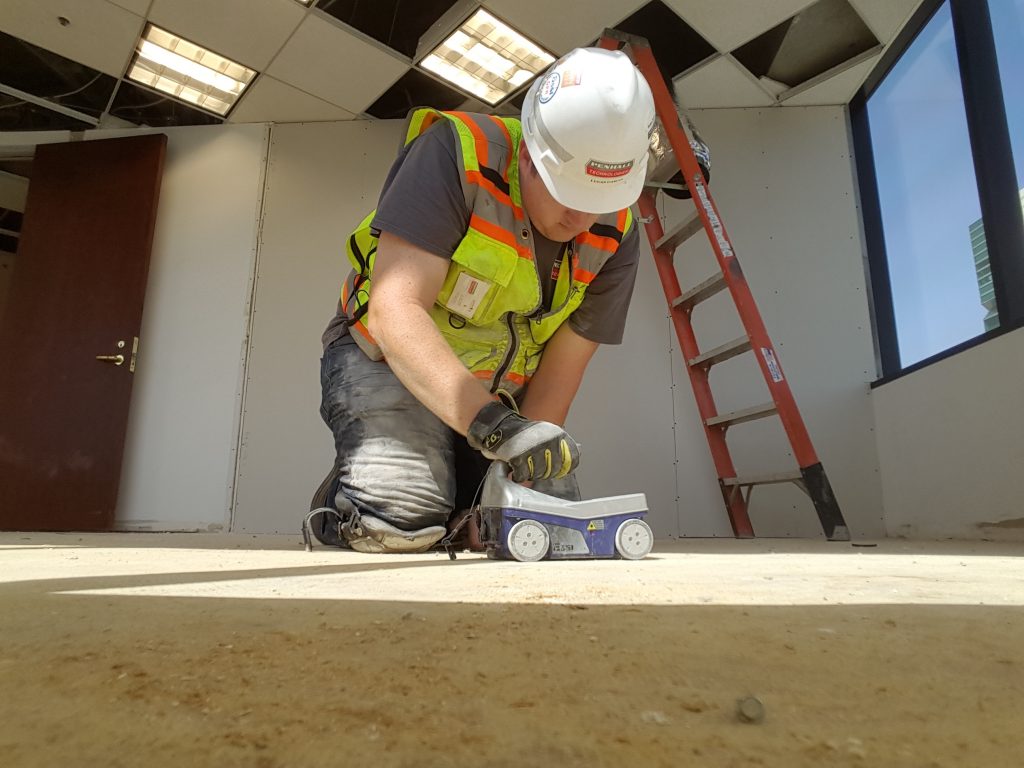Nationwide RainierGPR Service Areas for Advanced Concrete Scanning
Nationwide RainierGPR Service Areas for Advanced Concrete Scanning
Blog Article
Concrete Scanning: A Vital Step In The Direction Of Guaranteeing Architectural Honesty and Safety And Security
In the realm of building and infrastructure maintenance, the importance of concrete scanning can not be overstated. This meticulous procedure holds the essential to unveiling potential risks concealed beneath the surface of relatively strong structures. By utilizing advanced innovation and approaches, concrete scanning acts as a crucial tool in ensuring that the integrity and safety and security of bridges and buildings are supported to the highest possible standards. However, past its surface-level implications, the role of concrete scanning expands much much deeper than satisfies the eye.
Importance of Concrete Scanning
Concrete scanning plays a critical duty in guaranteeing the structural integrity and safety of buildings and framework jobs. By using sophisticated modern technologies such as ground-penetrating radar (GPR) and electromagnetic induction, professionals can non-destructively inspect concrete frameworks to identify potential defects, voids, embedded objects, and reinforcement format. This procedure enables very early discovery of anomalies that can compromise the security of a framework, preventing pricey damages and making certain the security of occupants.
Concrete scanning is particularly essential during the planning and building phases of a project. Before boring, reducing, or coring into concrete, scanning aids determine the exact locations of rebar, post-tension cords, and other ingrained aspects, lowering the risk of unintentional hits that could cause structural weak points. Furthermore, concrete scanning help in quality assurance by verifying the density of concrete covers and discovering any kind of discrepancies that may affect the general toughness of the structure. Eventually, buying concrete scanning services is not only a positive step to alleviate risks but additionally a basic action towards preserving the lasting security and stability of buildings and infrastructure.
Innovation for Concrete Examination

Benefits of Very Early Discovery
Prompt detection of structural issues can considerably reduce risks and make certain the durability of construction jobs. By determining potential troubles at an early stage in the building and construction procedure, stakeholders can take proactive procedures to deal with problems prior to they rise right into larger and extra costly troubles. One of the crucial advantages of early detection is the prevention of structural failures, which can pose severe safety and security threats and bring about job delays and financial losses.
Moreover, early detection enables prompt fixings and maintenance, which can help prolong the life expectancy of the structure. By dealing with concerns quickly, building and construction teams can avoid expensive repair work and even the requirement for early replacement of structural elements. This positive strategy not only saves money and time yet also improves the overall safety and longevity of the building task.
In addition, very early detection description can improve task preparation and decision-making by offering stakeholders with useful insights into the condition of the structure. Armed with this information, task managers can make informed options concerning building materials, methods, and timelines, bring about much more effective and successful job end results.
Making Sure Architectural Security
Guaranteeing the structural stability of a building task is vital to its safety and durability. Concrete scanning plays a crucial function in making sure architectural stability by finding possible issues such as voids, delamination, or reinforcement deterioration that can endanger the integrity of the structure over time.
By utilizing advanced scanning technologies like ground-penetrating radar (GPR) and electro-magnetic induction, building experts can non-invasively evaluate concrete frameworks to identify locations of concern beneath the surface area. This proactive method enables the early detection of weak points or issues, making it possible for prompt repair services or support to stop structural failures.
Routine concrete scanning throughout different building and construction stages and throughout the life cycle of a structure can assist keep its stability, mitigate dangers, and ensure the safety of residents. By prioritizing structural security via concrete scanning, building and construction tasks can boost their durability and sturdiness, eventually adding to higher security and durability.

Stopping Vital Failings
To secure against devastating occasions, careful tracking and aggressive upkeep are imperative in preventing important failures within architectural frameworks. Detecting potential issues prior to they escalate is essential to stop structural failures. Implementing regular examinations, such as concrete scanning, can disclose hidden problems like voids, splits, or rust that could endanger the integrity of a structure. By using sophisticated scanning technologies like Ground Permeating Radar (GPR) or Concrete X-ray, designers can non-destructively analyze the problem of concrete and recognize weak points that call for support or fixing - RainierGPR Service Areas.

Conclusion
In final thought, concrete scanning plays an important function in making certain architectural integrity and safety and security by making use of innovative modern technology for early detection of prospective problems. This proactive method helps stop critical failures and makes certain the security of frameworks. It is necessary to focus on concrete useful content assessment as a conventional method to secure the longevity and safety of buildings and framework.
Concrete scanning plays a critical role in ensuring the architectural stability and safety and security of structures and infrastructure tasks. Furthermore, concrete scanning aids in high quality control by confirming the density of concrete covers and detecting any discrepancies that might influence the general toughness of the structure. Concrete scanning plays an essential role in making certain structural security by discovering possible problems such as gaps, delamination, or reinforcement rust that might jeopardize the honesty of the framework over time.

In final thought, concrete scanning plays a crucial duty in Get More Info guaranteeing structural integrity and safety by utilizing sophisticated technology for early detection of possible issues.
Report this page